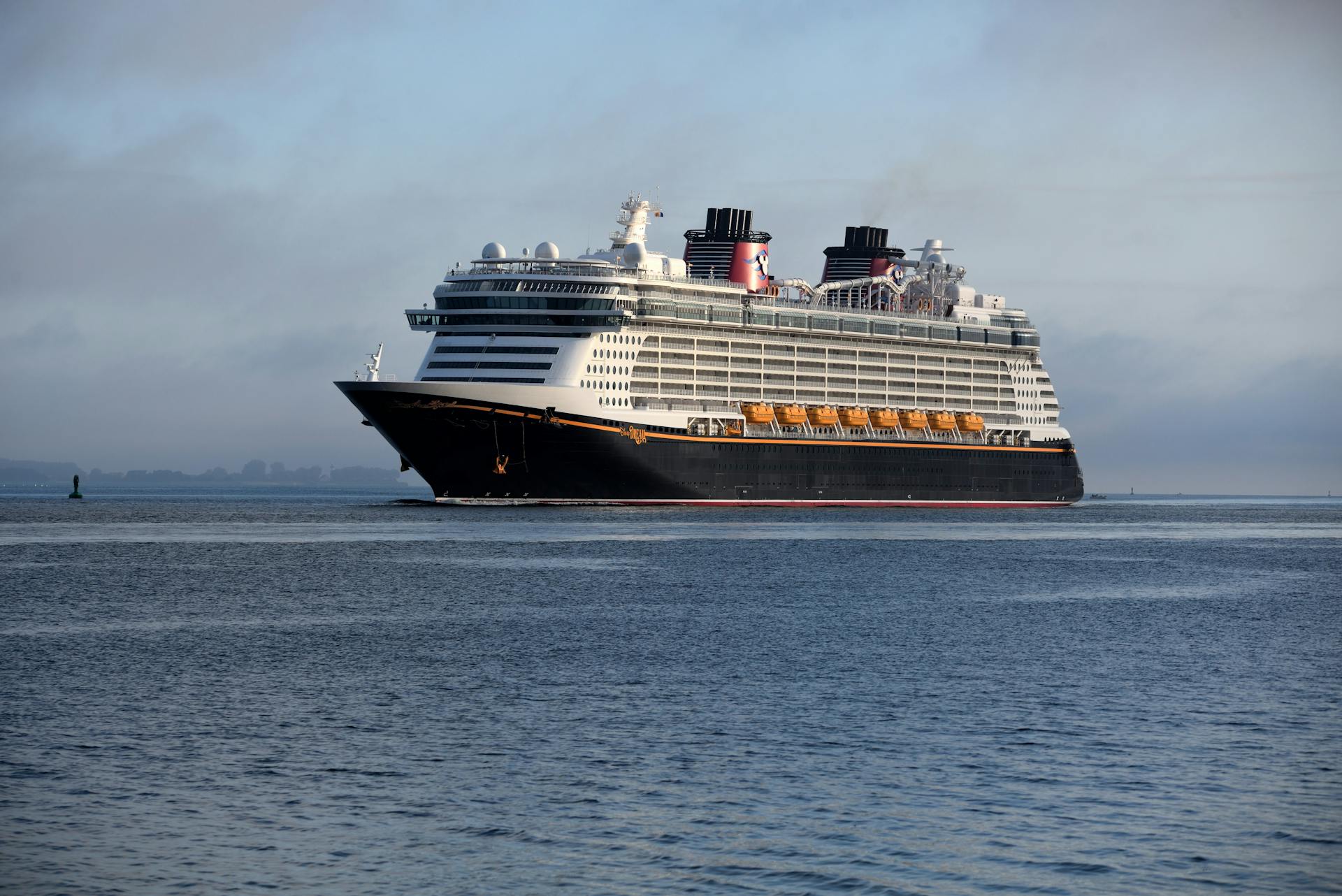
The RMS Mauretania (1906) was a ship that epitomized the Golden Age of Ocean Liners. It was the largest ship in the world at the time of its launch.
The Mauretania was built by the British shipbuilder Cunard Line and was designed to be a luxurious and fast passenger liner. It was a major innovation in shipbuilding technology.
The Mauretania held the Blue Riband, an award for the fastest transatlantic crossing, for several years.
History
The RMS Mauretania was officially the world's fastest ship in 1907. This achievement marked a significant milestone in her illustrious career.
In 1912, the Mauretania was docked at Queenstown, Ireland, while the Titanic was going through its darkest moments. The Mauretania was carrying the cargo manifest of the ill-fated ship.
Just under a year after the Titanic's sinking, King George V and Queen Mary of Teck were given a tour of the Mauretania.
Early Years – Including Titanic Disaster
The RMS Mauretania was officially recognized as the world's fastest ship in 1907.
In 1906, the Mauretania was launched, and five years later it was on a journey from Liverpool to New York when the Titanic embarked on its maiden voyage.
The Titanic's last moments were on April 15, 1912, as it went through its darkest moments, and the Mauretania was docked at the port of Queenstown in Ireland.
The Mauretania was carrying the cargo manifest of the Titanic.
Just under a year after the Titanic sank, King George V and Mary of Teck took a tour of the Mauretania.
Surpassing the SS Kaiser Wilhelm der Grosse
The British government wanted to build a high-speed vessel that could surpass the SS Kaiser Wilhelm der Grosse. This was a joint venture between Cunard and the government, with a loan of £2.6 million.
The new ocean liners were designed by master naval architect Leonard Peskett, who had help from Swan Hunter & Wigham Richardson and John Brown and Company. They made sure the Mauretania could be even faster than the Kaiser Wilhelm der Grosse.
Construction of the Mauretania and Lusitania began in 1904, after a design appeared in an issue of Shipbuilder’s magazine.
Construction and Design
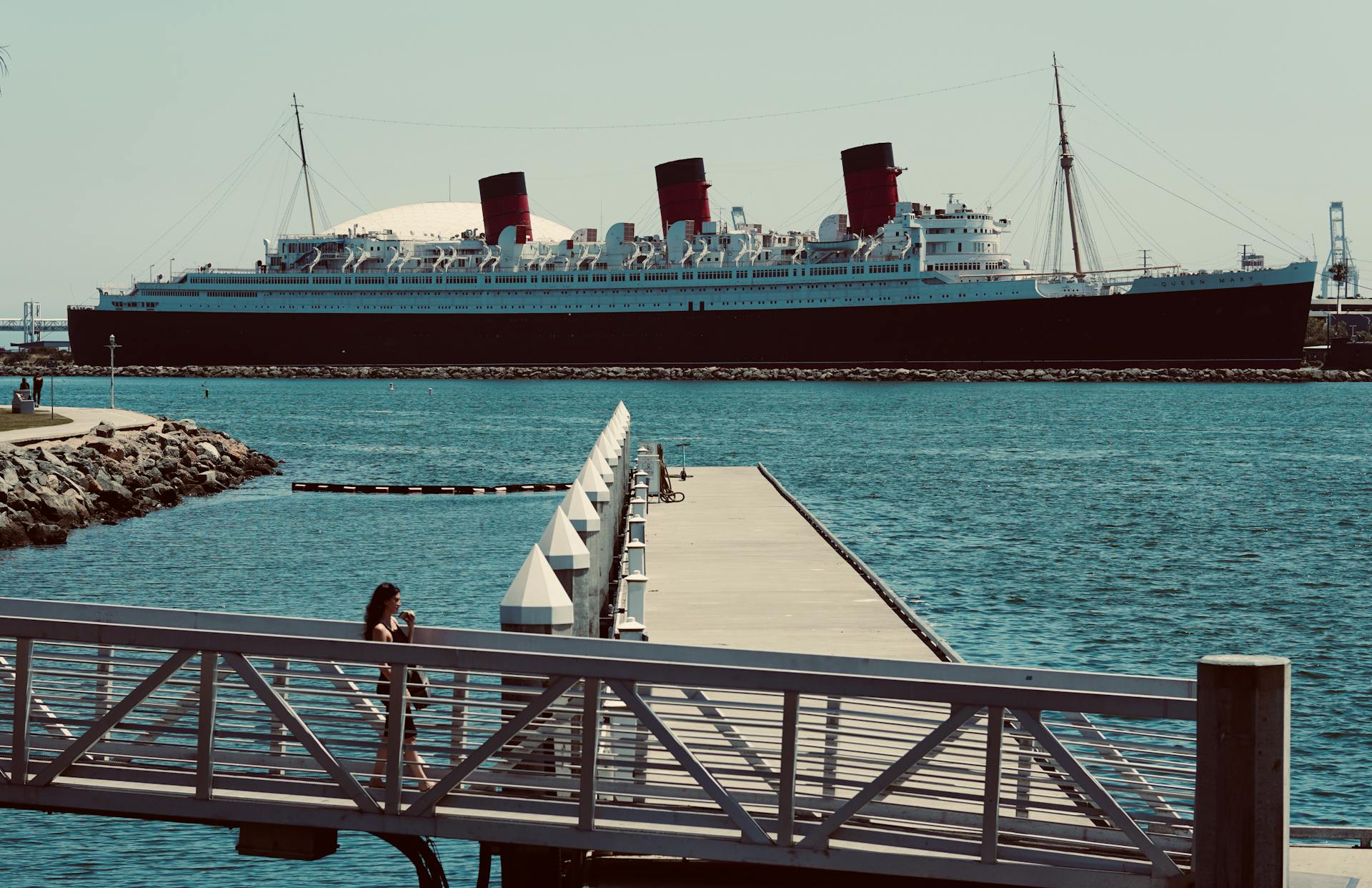
The RMS Mauretania was designed by the distinguished naval architect, Leonard Peskett OBE, and built by Swan Hunter & Wigham Richardson at Wallsend under yard number 735.
Her keel was laid down on 18 August 1904, and she was launched and christened on 20 September 1906, by the Duchess of Roxburghe. The Duchess of Roxburghe was the one who gave the ship its name, "Mauretania", which originated from a Berber Kingdom on the coast of North Africa.
She was a massive ship, measuring 790 feet long with a beam of 88 feet, and had a gross tonnage of 31,938.
Construction of
The construction of the RMS Mauretania was a remarkable process that involved some of the most skilled shipbuilders of the time. The ship was designed by the renowned naval architect Leonard Peskett OBE and built by Swan Hunter & Wigham Richardson at Wallsend.
The keel was laid down on August 18, 1904, marking the beginning of a new era in ocean travel. The ship was launched and christened on September 20, 1906, by the Duchess of Roxburghe.

The Mauretania was an impressive vessel, measuring 790 feet in length and 88 feet in beam. She had a gross tonnage of 31,938 and boasted 8 decks, making her one of the largest ships of its time.
The ship's specifications are truly remarkable, with a top speed of 24 knots and the ability to carry 2165 passengers. This included 563 First Class, 464 Second Class, 1138 Third Class, and 802 crew members.
Here are some key statistics about the Mauretania's construction:
The Mauretania's construction was a significant undertaking that required a substantial investment of £2.6 million from the British government. This loan was to be repaid over 20 years with an interest rate of 2.5%.
Design of the
The design of the RMS Mauretania was a masterclass in opulence. It featured 28 types of wood, which was a staggering number even back then.
The ship's interior was designed by British architect Harold Peto, who clearly had a flair for the dramatic. The interior was just as impressive as the exterior, with large amounts of marble and plentiful tapestries.
The rumor that the wood paneling was carved by 300 Palestinian craftsmen may be an exaggeration, but it gives you an idea of the level of craftsmanship that went into the ship's design.
Launch and Sea Trials
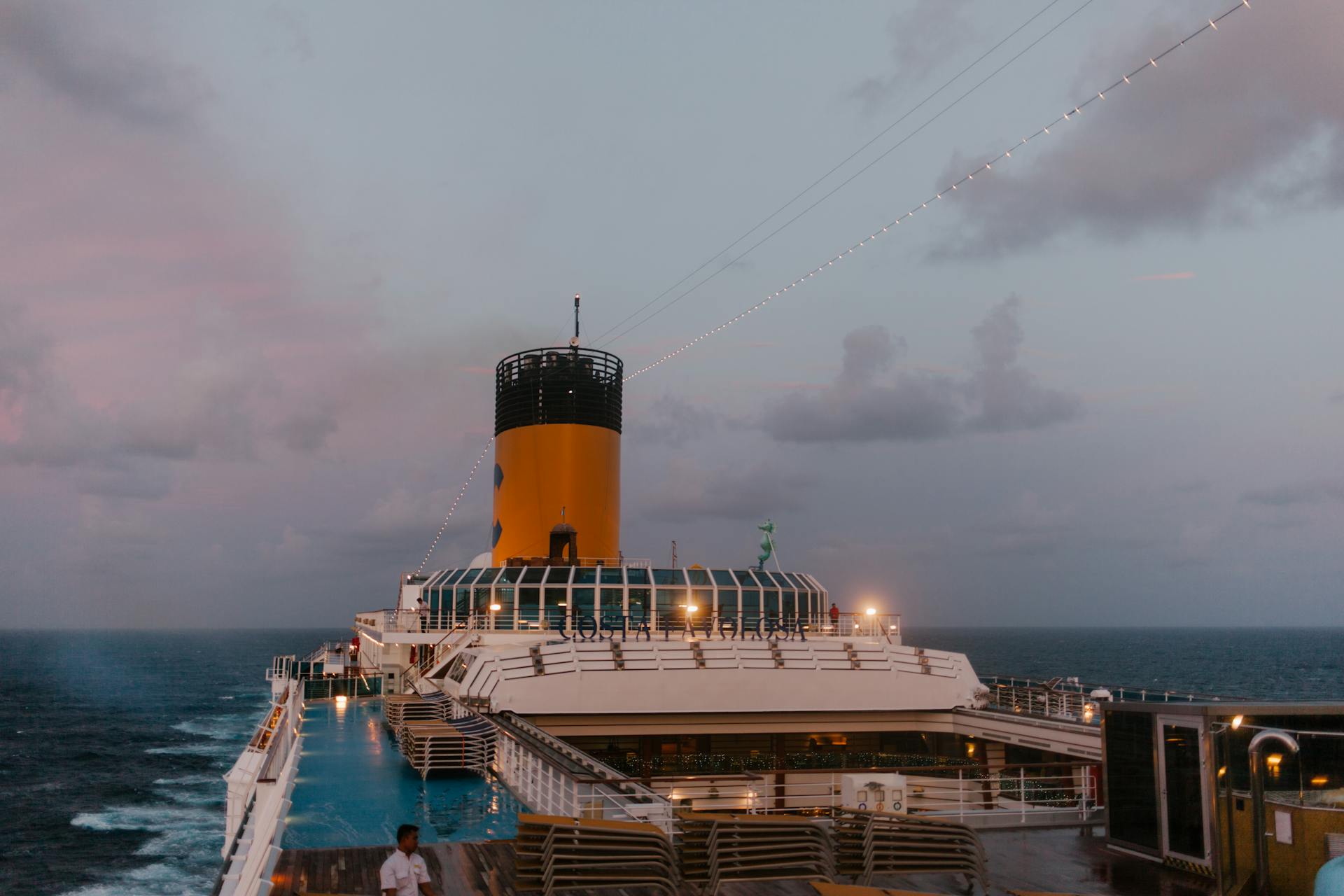
The launch and sea trials of a ship are a crucial part of its construction and design process. The ship is carefully prepared and positioned on the slipway, ready for its first contact with the water.
The hull is designed to withstand the stresses of launch, with a carefully calculated center of gravity to ensure a smooth and controlled descent into the water. This is made possible by the ship's unique hull design, which incorporates a robust and efficient propeller system.
The ship's propulsion system is thoroughly tested during sea trials, with the engines running at full capacity to simulate real-world operating conditions. This ensures that the ship can maintain its speed and maneuverability in a variety of scenarios.
The sea trials also provide an opportunity to test the ship's navigation and communication systems, including its radar, GPS, and communication equipment. These systems are critical to the ship's safe and efficient operation, and must be thoroughly tested before the ship is cleared for service.
Career and Service
The RMS Mauretania had a remarkable career spanning nearly three decades. She made her maiden voyage from Liverpool on November 16th, 1907, breaking the record for the fastest eastbound crossing with an average speed of 23.69 knots.
She captured the Blue Riband for the fastest westbound crossing in September 1909, a record that stood for over two decades. This achievement was a testament to her speed and efficiency.
During World War I, the Mauretania was requisitioned by the British government and served as an armed merchant cruiser, troop ship, and eventually a hospital ship. She was refitted multiple times, including a conversion from coal-burning to oil-burning engines in 1922.
World War I
During World War I, the RMS Mauretania played a significant role as an armed merchant cruiser, seeking refuge in Halifax with the Aquitania.
The Mauretania was briefly used as an armed merchant cruiser, but due to limited passengers, it was recalled and returned to Liverpool where it was laid up.
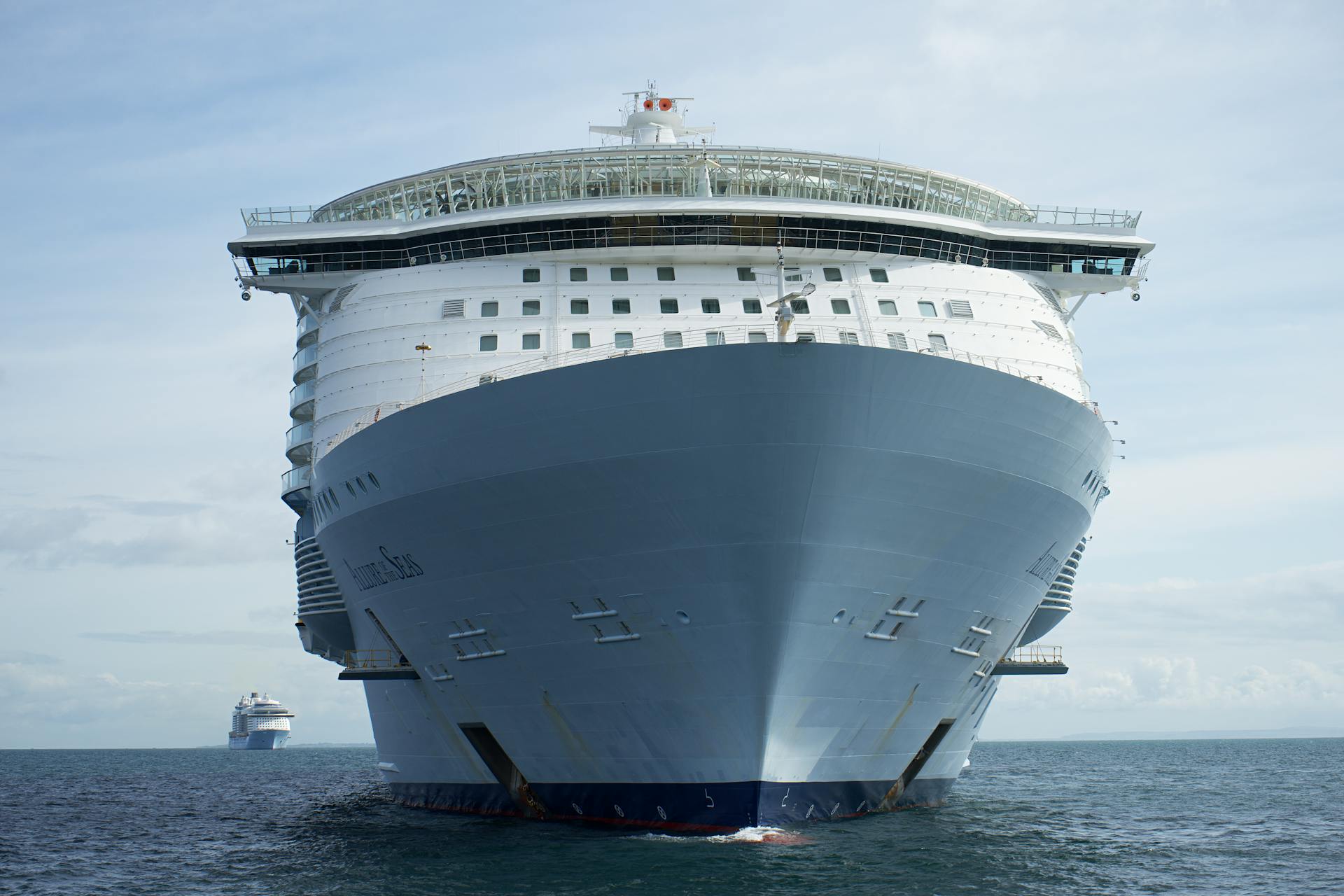
After the sinking of the Lusitania, the Mauretania was about to re-enter civilian service when it was decided to become a troopship.
Fitted with dazzle paint, the ship transported thousands of allied soldiers throughout the world to the front lines and back.
The Mauretania successfully fulfilled its wartime duties as a troopship, and after the war, it resumed service with the RMS Aquitania and RMS Berengaria.
Pre War Career: 1907-1914
Mauretania made her maiden voyage from Liverpool on November 16th 1907, and on her return voyage broke the record for the fastest eastbound crossing with an average speed of 23.69 knots.
In September 1909, Mauretania captured the Blue Riband for the fastest westbound crossing, a record that stood for over two decades.
Mauretania broke loose from her moorings in December 1910, sustaining light damage that caused the cancellation of her Christmas voyage to New York.
King George and Queen Mary were given a special tour of the Mauretania in July 1913, at a time when she was Britain's fastest merchant vessel.
A gas cylinder explosion occurred on January 26th 1914 while maintenance was being done on her turbines, resulting in the deaths of four men and injuries to six others.
Career
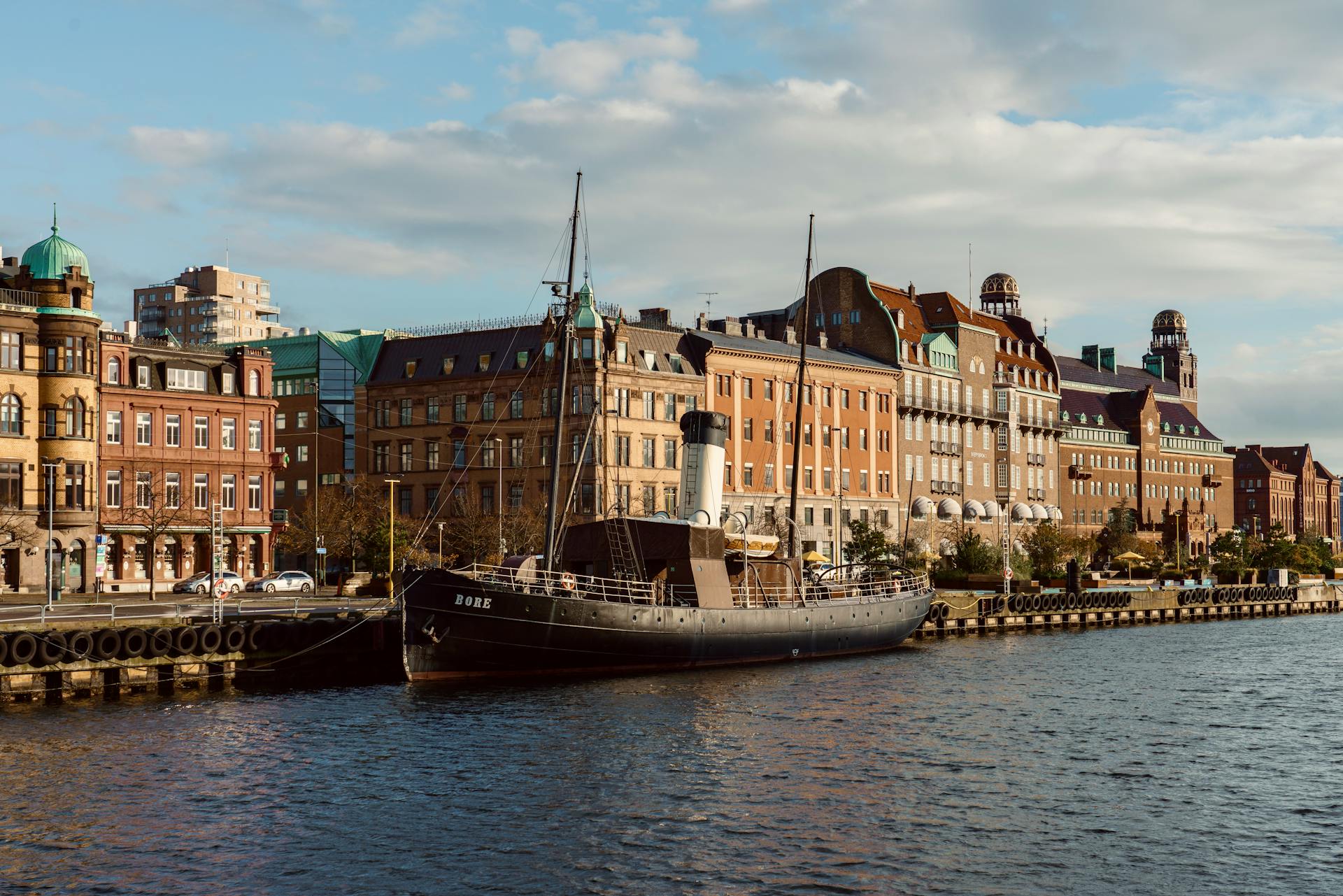
The RMS Mauretania was a transatlantic ocean liner that serviced the route from Southampton to New York between 1907 and 1914.
In May 1915, she was ordered to serve as a troop ship ferrying troops to the Gallipoli Campaign.
After the tragic loss of the Lusitania, the Mauretania was refitted as a hospital ship and became the HMHS Mauretania, capable of transporting 2000 patients at any one time.
Her war time service ended on 25 January 1916.
In 1921, she returned to active service after a delayed refit, with her engines converted from coal burning to oil.
However, this change reduced her speed, and she was eventually stripped and overhauled to improve performance.
The SS Bremen broke the Mauretania’s speed record in 1928, leading to further adjustments to her engines.
Despite these efforts, the Mauretania was eventually relegated to cruise ship duties in 1933 due to the economic constraints of the time.
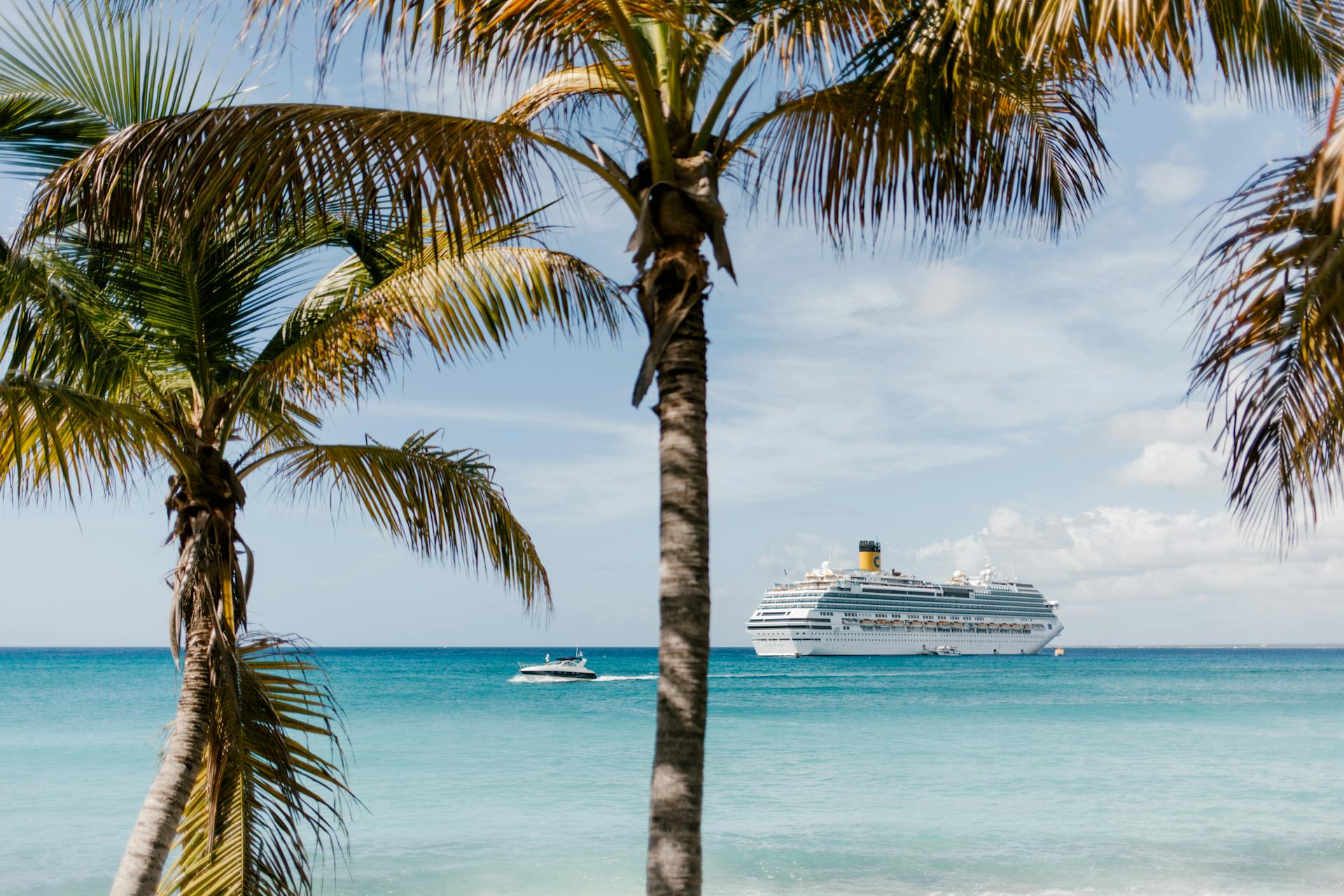
The Wall Street Crash of 1929 had already led to a reduction in voyages, making it difficult for the Mauretania to remain a competitive passenger vessel.
In 1934, she was withdrawn from service after her last cruise, marking the end of 28 years of dedicated service.
The RMS Queen Mary would go on to replace her, but the Mauretania's legacy lived on.
Specifications and Performance
The Mauretania was a powerhouse on the high seas, capturing the Blue Riband several times throughout her career. Her impressive speed was made possible by steam turbines powering four propellers.
This ship was fast, capable of out-running anyone, despite being smaller than her later contemporaries.
First-class passengers enjoyed a quick journey between continents, while those in third class suffered from the vibrations in the rear of the ship.
Interior and Details
The interior of the RMS Mauretania was designed by Harold Peto to impress Edwardian tastes.
The public rooms were fitted out by two notable London design companies, Ch. Mellier & Sons and Turner and Lord, who spared no expense in their design.
Twenty-eight different types of wood, marble, tapestries, and other furnishings were used throughout the ship, showcasing the opulence of the era.
One stunning example is the octagon table in the Smoking Room, which is a testament to the attention to detail and craftsmanship of the time.
The Mauretania's interior was truly a marvel of its era, and the photographs from the time showcase its beauty and grandeur.
Frequently Asked Questions
Why is the Mauritania ship famous?
The RMS Mauretania is famous for its exceptional speed, holding the record for the quickest trans-Atlantic crossing for many years. Its impressive speed and luxurious features made it a legendary ship in maritime history.
Featured Images: pexels.com
